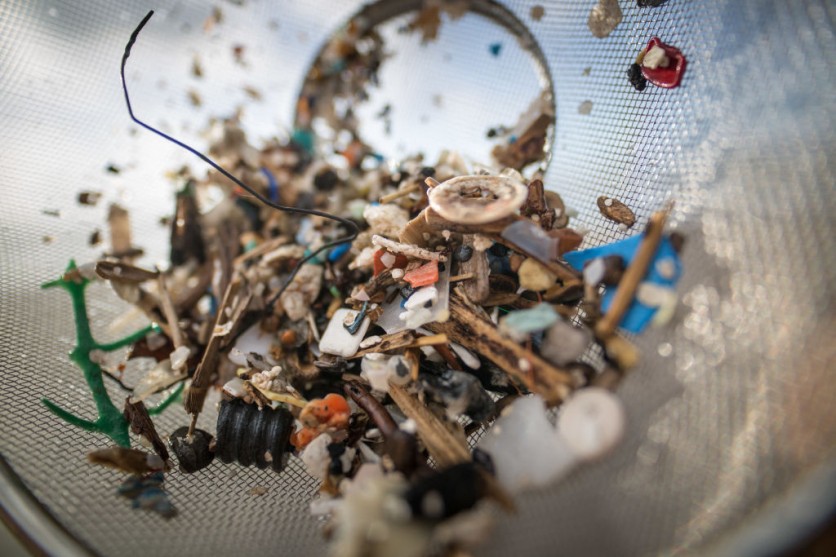Microplastics, or these minuscule plastic particles that have become prevalent in our environment, are now infiltrating a Missouri cave system, which had been closed to human visitors for 30 years.
Scientists from Saint Louis University (SLU), led by Dr. Elizabeth Hasenmueller, an associate professor of Earth and Atmospheric Sciences and associate director of the WATER Institute at SLU, conducted research that unveiled the unsettling truth.

(Photo : DESIREE MARTIN/AFP via Getty Images)
A volunteer of the NGO 'Canarias Libre de Plasticos' (Canary Islands free of plastics) carries out a collection of microplastics and mesoplastic debris to clean the Almaciga Beach, on the north coast of the Canary Island of Tenerife, on July 14, 2018.
Impact of Microplastics in Cliff Cave in Missouri
The researchers' findings cast a shadow of concern over the potential impact of these tiny plastic invaders on the delicate and secluded ecosystem in Cliff Cave. Their research showed microplastics were found throughout the cave even it has been closed to the public since 1993.
Notably, the team observed highest concentrations of microplastic debris near the cave's entrance and in sediment, which they attributed to either flood-driven deposition or the possibility of airborne particles settling around the cave's opening.
Interesting Engineering reported that microplastics have garnered significant global attention for their prevalence in marine environments. However, the research of Hasenmueller's team took a unique turn, delving into the subterranean world.
This relatively unexplored realm unveiled a startling revelation: microplastics are infiltrating subsurface environments, encompassing caves and groundwater.
Hasenmueller shed light on this lesser-studied facet of microplastic contamination, emphasizing its potential impact on groundwater, a crucial drinking water source.
As the research team delved deeper into the intricate passages of Cliff Cave, an unexpected correlation began to emerge - the connection between flooding and microplastic presence.
It became apparent that microplastics have a tendency to accompany water. During flood events, they are transported into the cave system, intensifying contamination.
Read Also : Scientists Create A 'Robot Fish' That Eats Microplastics - Will It Solve Plastic Pollution?
Correlation Between Flooding and Microplastic Levels
The research team stumbled upon a significant correlation between flooding and microplastic levels. It became evident that microplastics often accompany water, entering the cave system during flood events, further exacerbating contamination.
The team encountered an abundance of microplastic debris at the cave's entrance, likely brought in by floodwaters or carried by particles suspended in the air around the cave's opening.
However, EurekAlert! reported that the most astonishing discovery lay in the cave's sediment, where microplastics were nearly 100 times more concentrated than in the cave's water. This revelation suggests that microplastics settle within the cave's sediment and persist long after floodwaters have receded.
While Cliff Cave boasts its isolation, the threat of external influences looms large. The cave, situated near residential zones, raises concerns about potential human-driven contributions to its microplastic contamination.
This recent revelation harmonizes with earlier studies conducted by SLU's WATER Institute, which underscored the pivotal role of population density in the widespread distribution of microplastics in natural environments.
"On a larger scale, we, as a society, could move away from synthetic clothing because a lot of the debris that we found in this cave was synthetic fibers from textiles. And, of course, reducing our overall plastic production and consumption would help as well, " Hasenmueller noted.

ⓒ 2025 TECHTIMES.com All rights reserved. Do not reproduce without permission.




